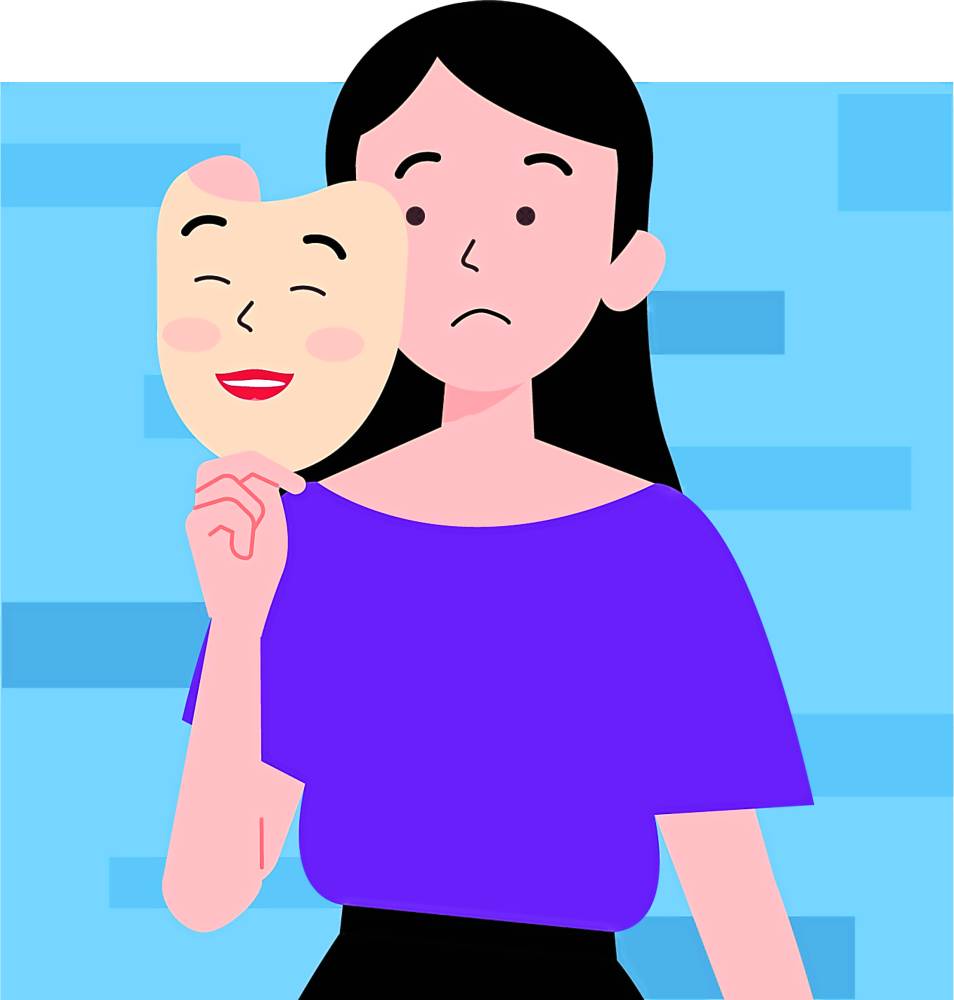
The degree to which we are authentic to ourselves and others determines our level of happiness. Being authentic means being honest about how we think and feel, to ourselves, and then having the courage to express this and make decisions from it.
The natural state of a child or an animal is to be authentic. We all started being authentic and real, until we were taught social rules. We were also taught shame and to care about other people’s judgments, sometimes more than our own.
Many of us were taught so well, we have started to believe the image we project to the world. Most of these facades are ones that are “competent, happy, unbothered and perfect.” The bigger the gap between this make-believe identity and what’s deep inside, the more the lies we tell ourselves. The more we live in denial, the farther we are from what will truly make us happy.
Very few people are truly aware of their own thoughts, emotions and wants in the moment. The message most of us got was, there is a right way to think, which is mostly to follow the “older and smarter” ones. We were taught that we should want to succeed according to standards set by those ahead of us—a spouse we can be proud of, a position in a company, beautiful genes and money to show off. We were taught that if we don’t want or achieve those, we are not good enough. And when we are not good enough, it’s embarrassing.
The assumptions behind are: What I think doesn’t matter because I’m probably wrong; I should be ashamed of what I’m feeling so I’ll pretend I don’t feel them; I should do everything I can to achieve their checklist so that I am worthy to be a part of the human race.
Blind spot
When we do this:
1. Emotions become our blind spot. We start to believe our denials and make up emotions that we think we should feel. Therefore when we say we’re happy, we can’t tell the difference between “I should be happy” and “I feel happy.”
2. We don’t know who we are. We create identities of ourselves that may be far from who we really are. This may be what we enjoy doing, what we’d rather be doing.
3. We live for others. Our standards are based on what they would think/say. We express ourselves the way “others” expect us to. As we live long enough in this world, we start to forget who the audience is that we’re pleasing. We start to think the world is our stage, and everybody is just waiting for us to make one mistake.
4. Exploring becomes really scary. We always need to be certain of success so we just follow everybody’s formula for life. We follow everything to a T, and later ask ourselves, “Is this what I really want to be doing for the rest of my life?” If we’ve lived in denial for so long, the answer to this is a deafening silence.
Wrong relationships
5. Unfulfilling relationships. We end up with relationships that fit the fake version of who we are. They initially follow the script of the drama until we can’t play the roles we took on anymore. And then it feels like the wrong relationship. It will feel more like a prison than a life-giving factor in our life.
6. Professions we don’t enjoy. Because we force ourselves to abide by other people’s rules, we tend to do what they do. This may be different from what we thrive in. The symptom of this is that we’re always uneasy and stressed. The dream is to get to a time when we can afford to not do what we’re doing. Yet we can’t imagine what else we’d rather be doing.
All of these are the cost of inauthenticity. We don’t know who we are, what we really think and feel, what we want to be doing. Sadly, this is a problem for a majority of people. We live in a world with so much hatred because the pain of inauthenticity becomes directed both internally and externally.
Instead of living in this charade, accepting ourselves for who we really are is a great start to navigate our lives. Seeing reality as it is allows our intrinsic wisdom to emerge. If we see our gifts and our flaws as they are, it is easier to make decisions on where to go, what to do, and what to say no to. Opportunities emerge for the ones who are clear with who they are, what they do best, and what problems they want to provide a solution for. —CONTRIBUTED
The author is an executive coach and an organizational development consultant. You may reach her at sheila.tan@gmail.com.